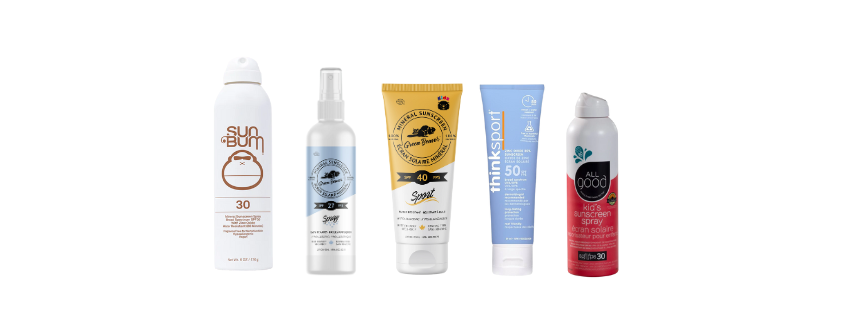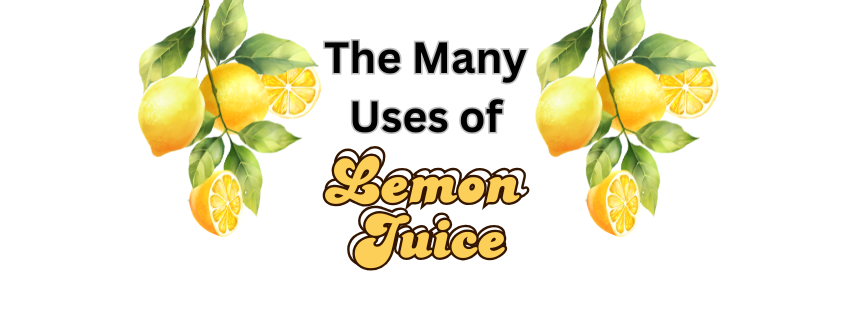Mineral vs. Chemical Sunscreen
Is Mineral Sunscreen Better For You Than Chemical?
We've finally entered summer and the sunshine is here! ...Whenever it decides not to rain.
When the sun is out and the temperature is hot, it's time to get the sunscreen out. But did you know there are several differences in the sunscreen products you might be buying? Let's look into it.
What is Mineral Sunscreen?
Mineral sunscreen uses ingredients like zinc oxide and titanium dioxide to create a barrier on the skin that reflects UV rays away from the body. They are known for having a heavier and thicker texture than chemical sunscreens. They work as a shield against the sun’s rays, reflecting and scattering the UV rays away from your skin.
Mineral sunscreens are usually opaque (not see-through) when applied and start working immediately upon application.
What's in Chemical Sunscreen?
Chemical sunscreens work like a sponge. They provide sun protection by absorbing the sun’s rays and preventing them from reaching the skin.
It contains chemical compounds like:
- Avobenzone
- Oxybenzone
- Octinoxate
Chemical sunscreen is typically transparent (see-through) when applied and needs some time to be absorbed into your skin before becoming effective.
Pros and Cons
Mineral Sunscreen
Pros
-
Beneficial for sensitive skin: Mineral sunscreens can be better for people with sensitive skin or skin allergies. They usually cause less irritation or allergic reactions compared to chemical sunscreens.
- Anti-acne: Mineral sunscreens are less likely to clog pores and contribute to acne breakouts., making them a great choice for people who have oily skin.
- Instant protection: Mineral sunscreens start working as soon as you apply them. Unlike chemical sunscreen, you don’t have to wait for the sunscreen to be absorbed before going out in the sun.
Cons
- Mineral sunscreens can sometimes thicker, texture compared to chemical sunscreens. This can make them feel heavier on your skin.
- Some mineral sunscreens can leave a white cast on your skin. The zinc oxide or titanium dioxide particles can be visible, especially on darker skin tones, however, many mineral sunscreen brands are able to minimize that effect.
Note: Many of today’s mineral sunscreens are not heavy and pasty like they used to be, and they’re now designed to be just as invisible as their chemical counterparts and not leave a white cast.
Mineral sunscreens can even come in tinted varieties to match your skin tone. They also come in powders, which can be applied over your makeup for convenience.
Chemical Sunscreen
Pros
- Easy to apply: Because of its ingredients, chemical sunscreens can be applied easier to apply due to its more lightweight, texture.
- Transparent on skin: Chemical sunscreens are transparent on your skin, without leaving a white cast.
- Water-resistant formulations: Chemical sunscreens often have a water resistant feature, which means they stay effective, even after going in the water. (However, many mineral sunscreen companies have learned how to make their products water-resistant as well, like ThinkSport)
Cons
- May cause allergic reactions or irritation.
- Chemical sunscreens need about 20 minutes to fully absorb and become effective after application, unlike mineral sunscreens which work as soon as they're used.
- To work effectively, chemical sunscreens are absorbed into your skin. Many have concerns about the absorption of those chemicals into the bloodstream.
Environmental Issues
Research has shown that close to 14,000 tons of sunscreen wash into the ocean every year. Oxybenzone and octinoxate (which are present in many chemical sunscreens) are two of the most common chemicals that are harmful to marine life and cause coral bleaching in our oceans.
Many mineral sunscreen brands are now developing sunscreen that isn't as harmful to our oceans. These are called: reef-safe sunscreens, which don't contain any harmful chemicals for your body or the environment. Overall, it's a much better option for our skin and marine life.
Both Zinc Oxide and Titanium Oxide (common ingredients in mineral sunscreens) are reef-safe and safe for your skin.

Options in Our Store
We have several Mineral Sunscreens that you can test in our store before you buy them!
SunBum: An easy to apply, continuous spray mineral sunscreen that’s Fragrance Free and provides Broad Spectrum SPF 30 protection to help protect skin from UVA/UVB rays.
Green Beaver Spray: Provides SPF 27 protection against UVA & UVB rays, is 100% natural, benzene-free, no harmful ingredients and is non-whitening. It applies and spreads easily on the skin
Green Beaver Sport SPF 40: Made for Kids, this chemical-free sunscreen has stronger support than the spray, with all the same benefits. Even though it is a lotion, it is still non-whitening and applies and spreads easily on the skin
ThinkSport: Sweat and water-resistant sunscreen SPF 50 is formulated with non-nano clear Zinc Oxide to provide broad spectrum protection against harmful UVA and UVB rays, leaving little to no white cast.
All Good: All Good Mineral Sunscreen Spray is made from reef-friendly non–nano zinc oxide and botanical ingredients, now in a handy dandy spray.
Conclusion
Overall, mineral sunscreen is better for your body and the environment than chemical sunscreens and is just as effective, if not more. Most of the problems with mineral sunscreen revolve around its thick texture, which many companies have learned to overcome. Applying sunscreen is necessary, especially on hot summer days and it's best to choose a product that isn't terribly harmful to your body or the ocean.










